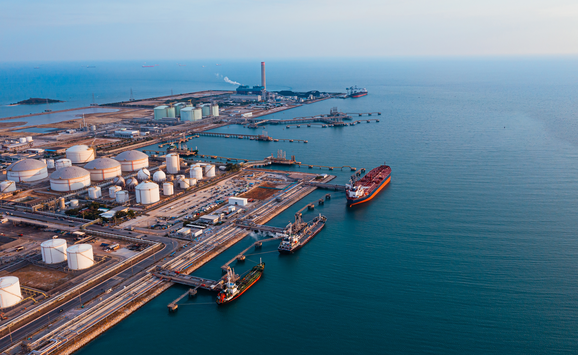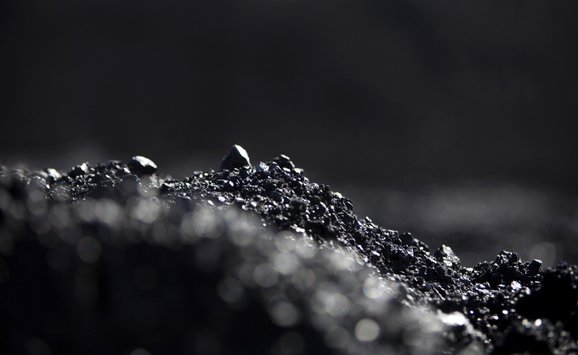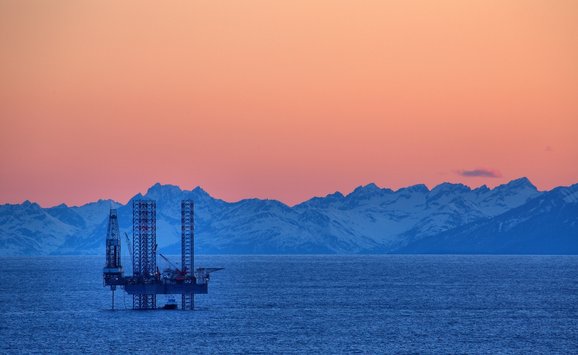The shale gas revolution that started at the dawn of the twenty-first century has transformed the American energy landscape, allowing drillers and pipeline operators to quickly and cheaply extract natural gas from areas that were previously economically unviable. However, shale gas production requires drilling and well-pads, gathering pipelines, intrastate and interstate transmission pipelines, compressor stations, and roads—all of which have an impact on the surrounding natural environment.
A classic tradeoff situation arises between minimizing costs of shale gas infrastructure and avoiding environmental impacts. While pipeline companies likely take some natural features into account in deciding on the infrastructure design, maximizing environmental protection would likely require further modifications to the design such as routing pipelines around forests and wetlands. It is unlikely that—in the absence of regulation—companies would account for the full value that society places on the environment, as these environmental protections would come at a direct private cost to the industry.
A better understanding of the tradeoffs between infrastructure costs and environmental impacts can provide insight for policymakers into the potential costs and benefits of regulatory policy design. In our paper, "Systematically Incorporating Environmental Objectives into Shale Gas Pipeline Development: A Binary Integer, Multi-Objective Spatial Optimization Model," we focus on the environmental impacts of pipelines that move gas and oil from drilling sites to production sites (i.e., gathering pipelines) and develop a mathematical model able to optimally site pipeline routes and determine the associated construction cost under varying levels of environmental protection. We call the model the Multi-Objective Pipeline Siting (MOPS) model.
The most simplistic portrayal of the choice between costs and impacts is below: Image 1a shows a pipeline design option that minimizes gathering line distances (and costs) from each well, but cuts through blocks of forest to reach the main transmission lines. Image 1b shows an option that minimizes environmental impact by routing all gathering lines from wells to avoid forests, but requires greater distance and increased costs.
Gathering pipeline system design is a challenging optimization problem because each length of gathering pipeline must be connected to other gathering pipeline in such a way that all wells are connected to large transmission pipelines. To address these challenges, our MOPS model formulates the pipeline design problem as a multi-origin, multi-destination problem, with nodes representing the wells and the transmission pipeline connectors. The landscape is represented as a grid, with attributes such as land cover associated with each grid cell.
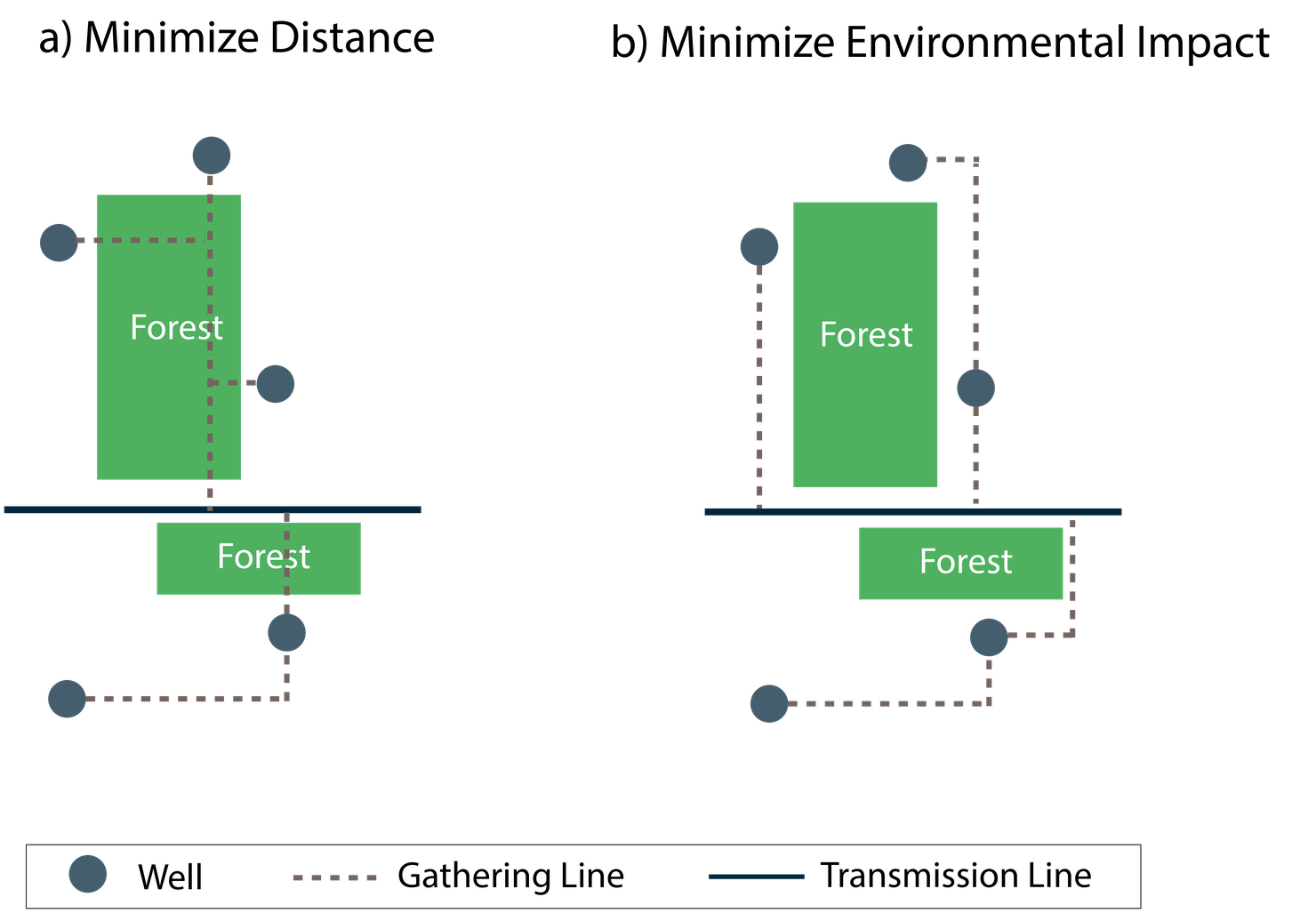
To examine on-the-ground tradeoffs, we applied the model to pipeline development in Bradford and Susquehanna counties in northeast Pennsylvania. This region was selected because it has seen considerable shale gas development since 2001, and there are good data on pipeline characteristics and locations, land use patterns, and other environmental characteristics, such as rivers and streams, slopes and topography, and ground cover. We use 1,010 evenly spaced grid cells, each just under 2,000 feet by 2,000 feet. The total area is around 140 square miles, and includes 117 wells and eight connectors between gathering lines and transmission pipelines. Approximately 53 percent of the study area is covered by forests or wetlands.
In the figure below, we show the results of two model runs that highlight how accounting for environmental impacts can change the optimal location of gathering pipelines. In the first, we model a least-distance, least-cost approach that takes into consideration river crossings and slopes, each of which increases costs and technical challenges. This configuration represents the optimal pipeline placement to minimize costs, with no limit on impacts on forest or wetland habitat. We also developed a second case that prioritizes reducing the impacts on habitat, by routing pipelines around forests and wetlands in green. The least-cost solution is shown in red, and the solution that minimizes environmental impacts is shown in grey. The grey pipeline layout avoids most of the areas covered by forest and wetland, but at the cost of increasing pipeline distances and costs.
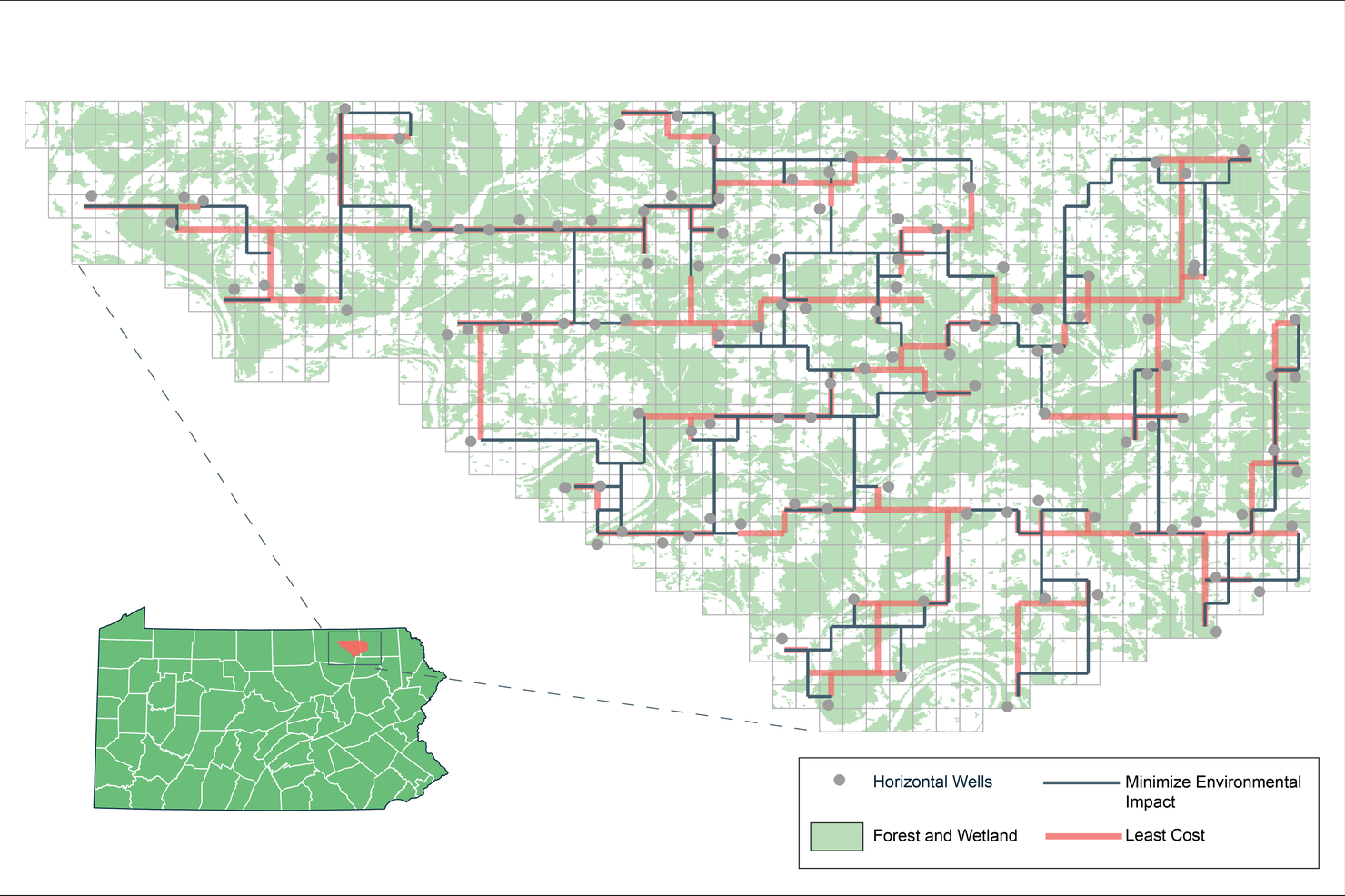
In addition to the two model runs described above, we conduct multiple model runs where we vary the weight placed on environmental impacts to develop a tradeoff curve between cost and environmental impact. In a curve we plot below, we show the marginal pipeline costs of avoiding each additional acre of habitat impacts. What is striking is that large benefits for the environment can be achieved at relatively low costs. For instance, 10 percent of the likely habitat impact can be avoided at a price increase of less than 2 percent. A 20 percent reduction in habitat impact only increases costs by 11 percent. However, there is a point at which the marginal cost of each increased area of protection increases sharply.

Natural gas is a vital part of America’s energy sector, and its continued expansion has provided an economic lifeline to many rural areas. However, infrastructure expansion can come at an environmental cost. Our results suggest that more systematic planning and development of gathering pipeline siting can substantially reduce environmental impacts at relatively low cost. This presents an opportunity for regulators, industry, and other stakeholders to coordinate to reduce environmental impacts. Models such as ours could be used by stakeholders to quantify tradeoffs and provide insight into the potential costs and benefits of various policy designs.
For example, policymakers could take into consideration the ecosystem services provided by a forest or wetland and determine the additional expenditures on construction needed to avoid sensitive habitats, to ensure that the economic benefits of avoided habitat impacts exceed the costs. This could include evaluating the ecosystem values of watershed protection, species habitat, carbon sequestration, and recreation, while crafting incentive structures for private gas drilling and pipeline operators to minimize the impact of their operations and hence make gas development more environmentally sustainable.





